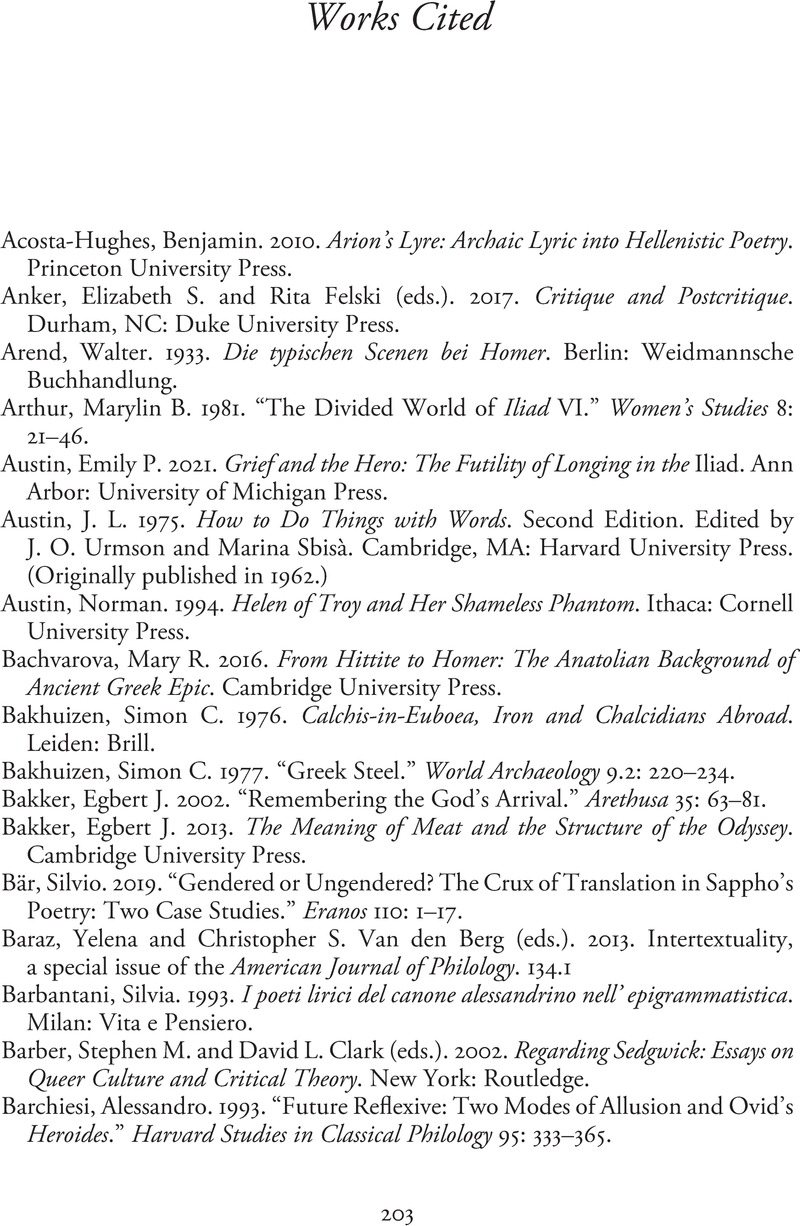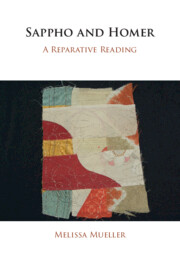Book contents
- Sappho and Homer
- Sappho and Homer
- Copyright page
- Dedication
- Contents
- Acknowledgments
- A Note on Texts and Abbreviations
- Introduction
- Part I Reparative Reading
- Part II Sappho and Homer
- Appendix On the Absence of the Newest Sappho Fragments from this Book
- Works Cited
- Index Locorum
- Subject Index
- References
Works Cited
Published online by Cambridge University Press: 07 December 2023
- Sappho and Homer
- Sappho and Homer
- Copyright page
- Dedication
- Contents
- Acknowledgments
- A Note on Texts and Abbreviations
- Introduction
- Part I Reparative Reading
- Part II Sappho and Homer
- Appendix On the Absence of the Newest Sappho Fragments from this Book
- Works Cited
- Index Locorum
- Subject Index
- References
Summary

- Type
- Chapter
- Information
- Sappho and HomerA Reparative Reading, pp. 203 - 226Publisher: Cambridge University PressPrint publication year: 2023



